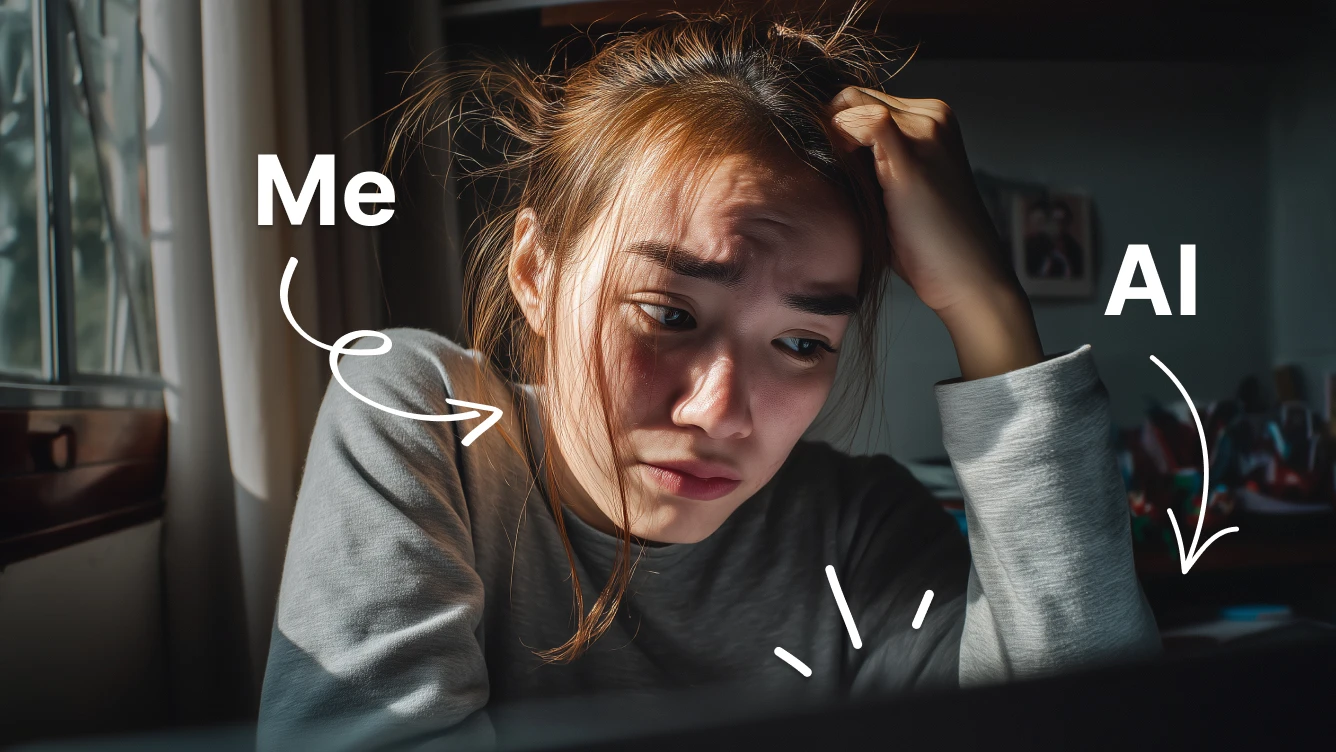Two years ago I was staring at the cursor on my screen, and suddenly, an email popped up. For years, I’d prided myself on being a hands‑on designer: sketching thumbnails in my notebook, tweaking vectors at midnight, looking over every pixel. But overnight, the world of design had changed (every world in tech actually). “AI can generate logos, mock up packaging, even animate images in just one click” my inbox buzzed. I felt that familiar knot in my stomach. The fear that my skills, my passion, were suddenly obsolete.
My first instinct was to ignore it all. I’d heard the buzzwords before: “This tool will transform creative work,” “No more tedious tasks,” “Design in seconds.” But every time I tried one of those AI demos, it felt hollow—generic shapes, awkward layouts, ideas that smelled like they were cooked up by an algorithm, not a human heart. I closed the tabs and went back to my safe, familiar routine.
Yet, the more I resisted, the more I watched my peers tweet about the magic of AI, share stunning mockups and land clients by promising faster turnaround. I started searching again, this time not out of curiosity but necessity and fear. I needed to know how this was happening, and whether I could survive in a world where “Make me a poster” could be typed into a prompt box.

Learning to Guide, Not Replace The real epiphany came when I realized the AI wasn’t replacing me; it was taking care of the busywork I hated. Instead of wrestling with repetitive tasks—resizing, color matching, background removal—I could focus on higher‑order decisions: mood, narrative, brand voice. I found myself sketching bolder concepts, layering more expressive typography, and refining the details that truly matter.
With each project, I learned to speak AI’s language: clear prompts, simple directives, iterative feedback. For example, I asked Artificial Studio to generate three variations of a layout, then picked the strongest and reshaped it. I used the “Animate Image” tool to test a subtle parallax effect on a hero banner, then fine‑tuned the speed and easing until it felt just right.
I fully understand the fears; I have them too, but since this revolution cannot be stopped, I recommend joining it to get the most out of it, rather than staying behind and getting angry.
As deadlines loomed, what used to feel like panic transformed into excitement. I wasn’t racing against a machine; I was collaborating with one. I found myself playing, experimenting, and discovering new styles I’d never tried before. The AI tools became a springboard for creativity instead of a threat.
Last month, I sat down to redesign my personal portfolio. Normally, I’d spend days debating color palettes and layouts. This time, I opened the AI, prompted something like “generate a sleek, minimalist portfolio layout with muted tones and bold accents,” and within minutes I had three distinct concepts. I cherry‑picked the best parts of each, added my own illustrations, and the result was something I couldn’t have envisioned on my own.
Today, I start every project by asking, “How can AI help me focus on my strengths?” The answer usually comes in the form of automatic mockups, instant color grading, or rough animations that I can polish. What once felt alien now feels like a natural extension of my workflow.
I still sketch by hand. I still agonize over font choices. But AI has given me back the time and energy to do it well. Instead of fearing obsolescence, I’ve embraced a partnership that pushes me further, and faster.
Now, all the marketing and strategy books I'd ever read couldn't be applied as they once were. Business and work logic have changed forever, and we must adapt. And the worst part is that we don't know how far this will go either. It's impossible to know. We'll be adapting tirelessly every day, and the terror is overwhelming. To what extent will our jobs become disposable? To what extent will designers no longer be necessary?
Will we become some kind of curator of client communication with AI, or will we all simply be out of work? These are questions that keep us awake at night. But in the meantime, we have to learn how to use these tools to take advantage of them and be well positioned among the competition. AI makes you go faster and be more efficient. We achieve nothing by giving up.
If you’re a designer, illustrator, photographer, or content creator and you’re reading this with a knot in your stomach: trust me, you’re not alone. The tools are only as good as the person guiding them (at least in this period of time). And right now, those tools are as eager to collaborate as any creative I’ve ever met.
So give it a shot. Open Artificial Studio, type your first prompt, and see where the outcome takes you. You might just rediscover why you fell in love with this work in the first place! ❤️🩹
Mariko - Product Marketing Manager.
Related reading:

